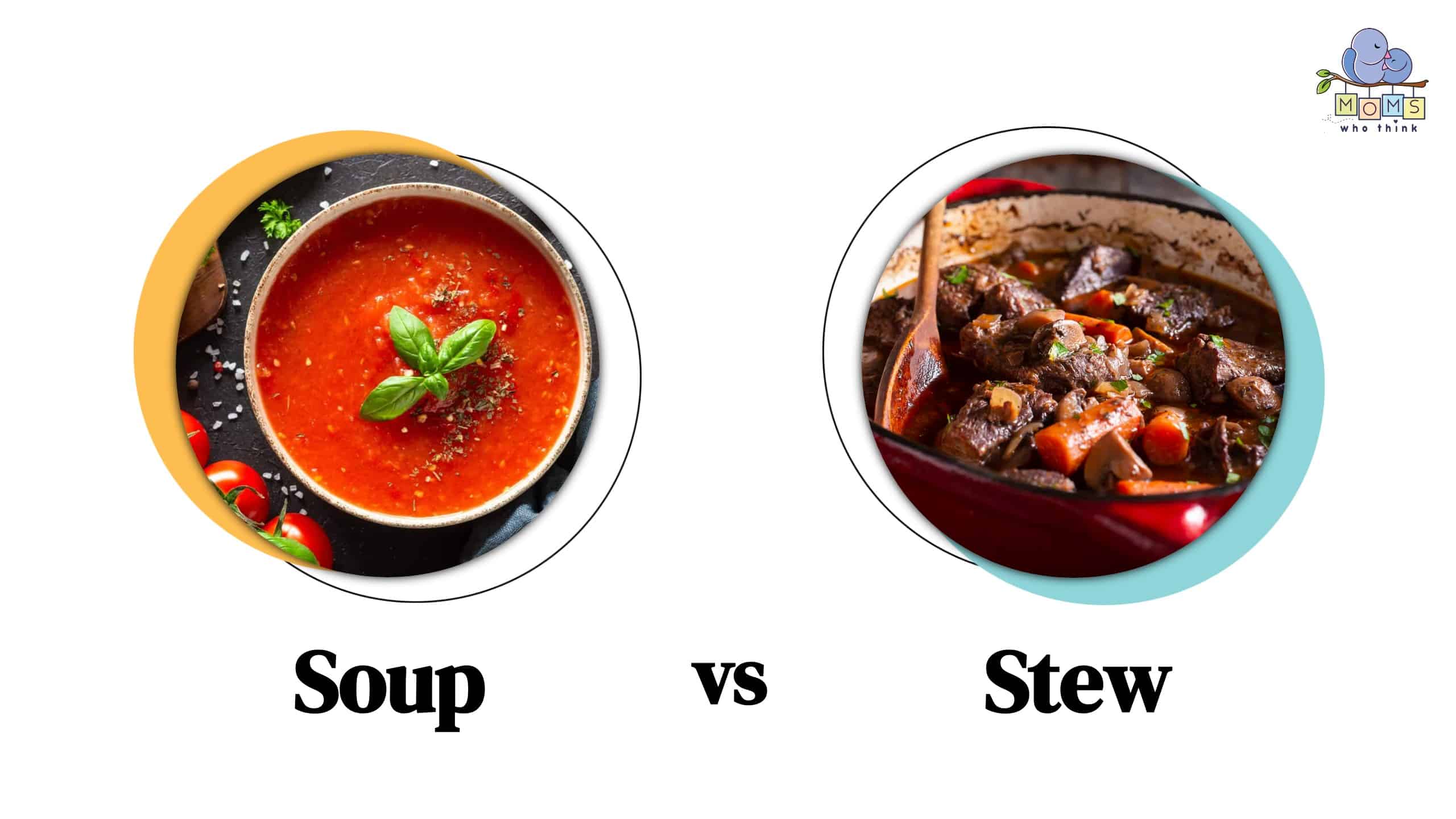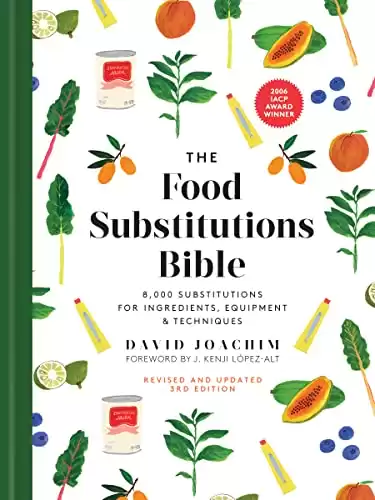You might think of soup or stew when you want a warm, comfortable meal. But are they the same thing? Both meals have a liquid base and include various ingredients, but each has unique features that make them stand apart. In this article, we will discuss the differences between the two popular dishes and learn about the different culinary techniques used to prepare them.
The Main Difference Between Soup and Stew
The main distinctions between soup and stew are their consistency, cooking methods, and ingredient amounts. Soups have a thinner, more liquid texture, but stews have a thicker, heartier feel. In addition, soups have a higher liquid ratio to solid ingredients, resulting in a more broth-based meal, while stews have more meat, vegetables, and sometimes grains.
Soup and stew cooking methods are different as well. You can often cook soup at low heat, allowing the flavors to blend and the ingredients to soften. On the other hand, you can cook stews gently at lower temperatures to concentrate the flavors and keep the ingredients whole and tender.
4 Key Differences Between Soups and Stews
When thinking about how soups and stews are different, remember these important areas:
- Appetizer vs. Entree: Stews are mostly served as entrees whereas soups have a greater variety. They're often served as appetizers, but some heartier soups can also be a main course.
- Served on Its Own: Soups are generally served on their own, but stews are often served over rice or even pasta.
- Heartiness: Stews are normally heartier. They're slow-cooked and contain less liquid than soup.
- Hot or Cold: Stews are almost exclusively prepared hot, but soups are often served hot or cold.
What Is Soup?
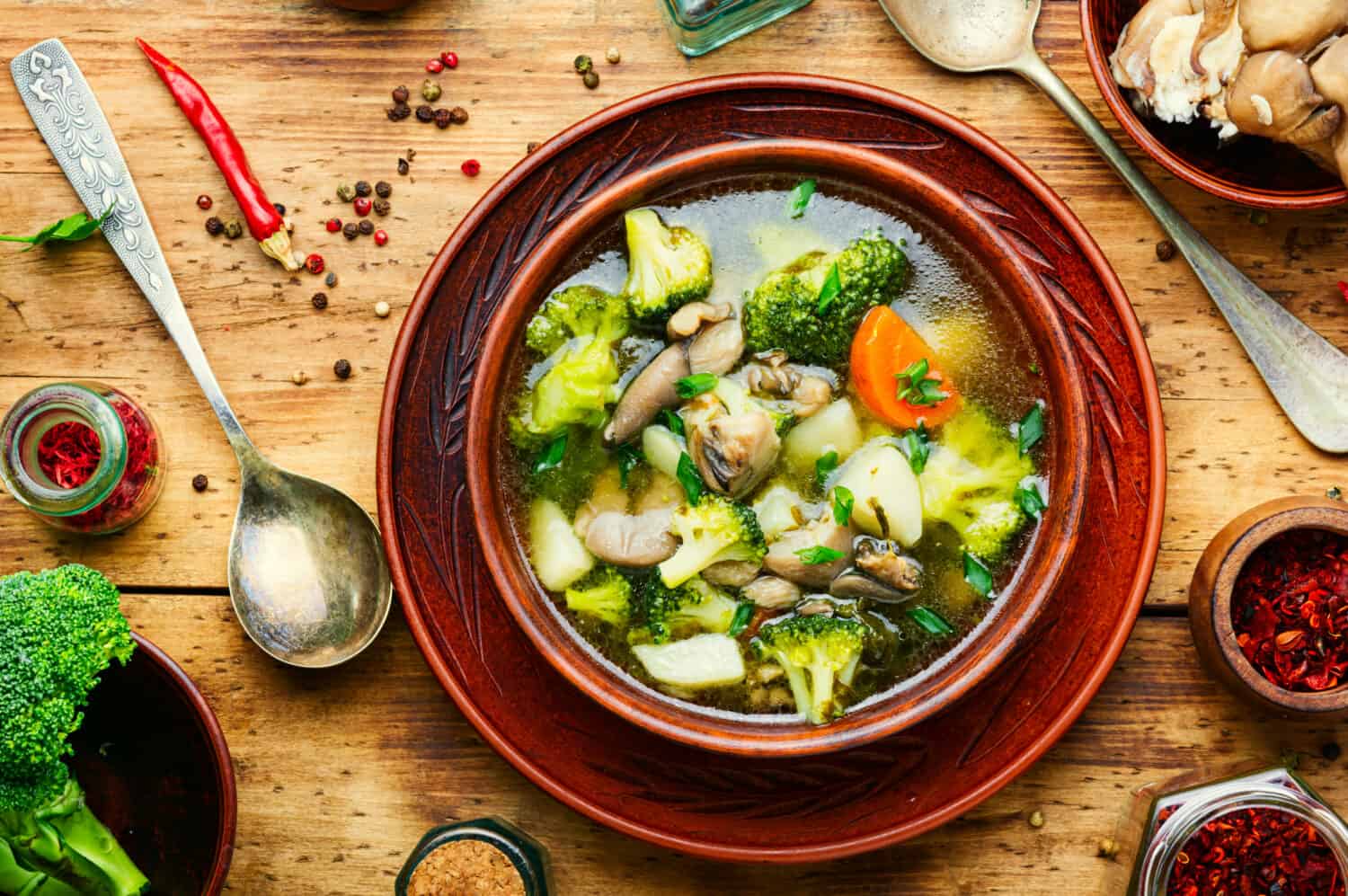
©Chatham172/Shutterstock.com
With over 250 varieties worldwide, soup is a flavor-filled broth made by cooking meat, poultry, seafood, vegetables, and grains in stock, broth, or milk. You can serve soup cold or hot, depending on the type of soup you make. As a dish that spans numerous culinary traditions and cultures, soup offers many flavors, textures, and styles to suit any dietary needs or preference.
- The must-have convenient reference guide for every home cook!
- Includes more than 8,000 substitutions for ingredients, cookware, and techniques.
- Save time and money on by avoiding trips to grab that "missing" ingredient you don't really need.
Soup was first made in 20,000 BC when humans discovered mud vessels and clay pots. In 6000 BC, soup became a part of a regular menu. The word “soup” originated from the French term “soupe,” which comes from the Germanic word “sop,” referring to a piece of bread soaked in broth. Today, soups continue to be a beloved dish across the globe, representing the different culinary traditions and influences of countries throughout history.
Making Soup Healthier: Simple Substitutions
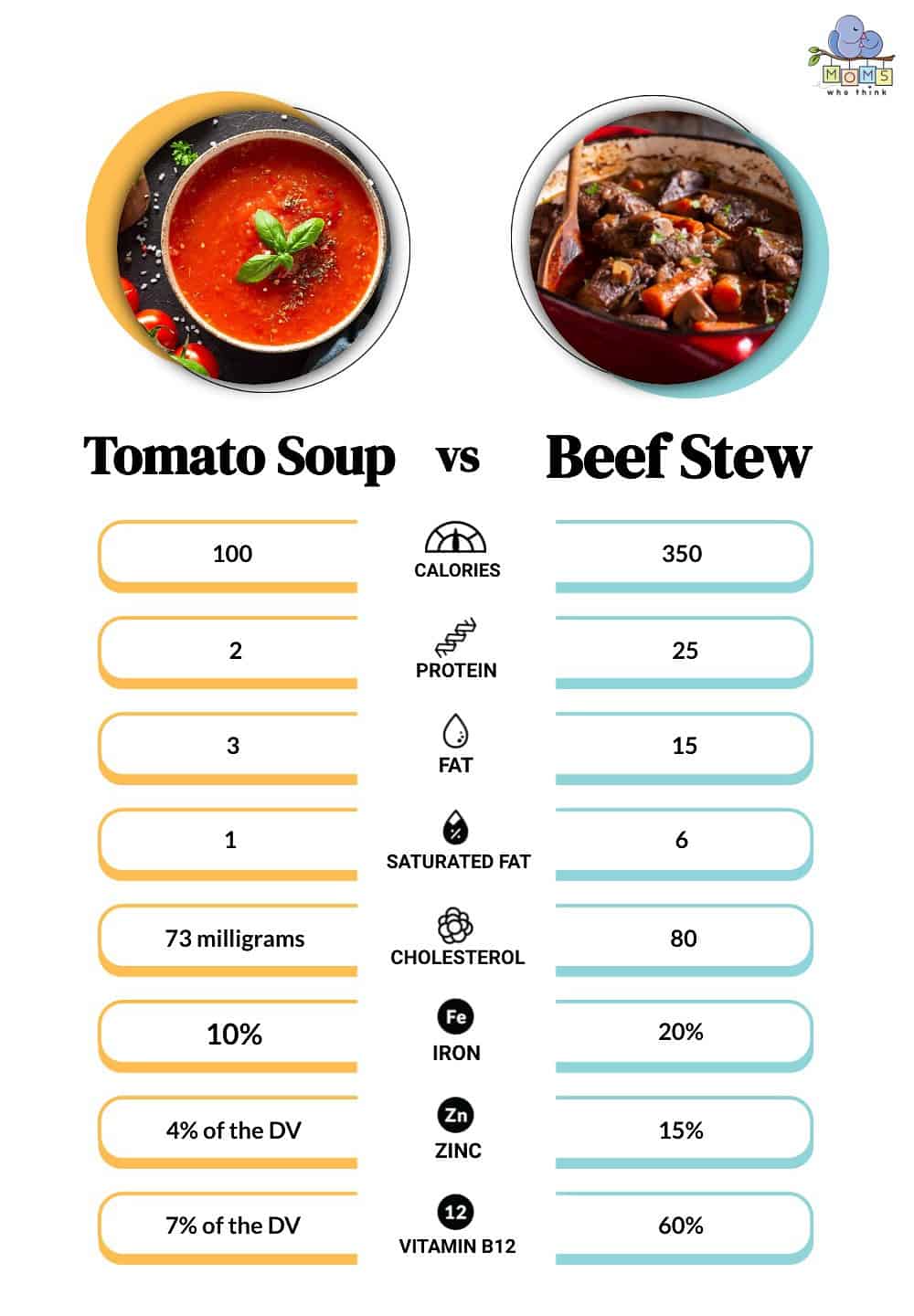
©
Low-Sodium Broth
Low-sodium broth is a healthier choice for soups and contains less salt than regular broth. Reducing sodium content will allow you to manage your salt intake, which can be very important to those with high blood pressure or other health concerns. Buying low-sodium broth or creating a homemade broth can help you maintain a healthier blood pressure level while enjoying delicious, comforting meals.
Choose Lean Proteins
When you choose lean proteins like turkey, chicken, fish, beans, and lentils, you obtain the amino acids you need without eating too much saturated fat. Choosing lean proteins helps people keep their weight in a healthy range, build muscle, and keep their hearts healthy. By adding lean proteins to soup recipes, you can prepare balanced, heart-healthy meals that taste excellent.
Replace Cream with Healthier Alternatives
Replace heavy cream with low-fat milk, yogurt, or pureed vegetables to achieve a creamy texture while being healthy. Using low-fat replacements can help you lose weight while keeping your heart healthy. Experimenting with cream substitutions might also result in new and exciting flavor combinations.
Use Heart-Healthy Fats
If you sauté your meats and vegetables, use olive or avocado oil instead of saturated fats or butter. Changing to these fat alternatives will be very good for your health. These healthy fats can help lower harmful cholesterol levels and the risk of heart disease and stroke. In addition, by making one easy change, you can prepare healthier and more nutritious soups without sacrificing taste or quality.
5 Soup-Making Techniques
Different soup preparation techniques differ based on the type of soup and your desired outcome. Here are some standard techniques you can use in preparing soup:
- Slow cooking: Slow cookers are an excellent tool for cooking soups because they allow ingredients to cook at a low temperature for an extended time. Since the long, gentle cooking technique softens the ingredients, this approach is excellent for soups containing harder chunks of meat or dry beans.
- Sweating: Cooking vegetables in a small amount of fat over low heat with the pot covered is the approach used for this technique. Sweating helps the vegetables to release moisture and soften without browning, which is excellent for some soups, such as a clear vegetable broth.
- Sauteing: Before adding the liquid, vegetables and other ingredients like onions, garlic, or spices are frequently sautéed in oil or butter. By sautéing the ingredients, they get caramelized, and the tastes are enhanced, giving the soup more depth.
- Pressure Cooking: A pressure cooker is another excellent piece of equipment for producing soups because it cuts cooking time tremendously. This method is beneficial when making soups containing ingredients that take a long time to cook, such as dried beans or tough chunks of meat.
- Pureeing: Ingredients for smooth, creamy soups are frequently boiled until tender and then puréed in a blender, immersion blender, or food processor. Pureeing results in a velvety texture and excellent consistency.
Using these techniques, you can create various soups with various textures, flavors, and consistencies to suit any taste or preference.
What Is Stew?
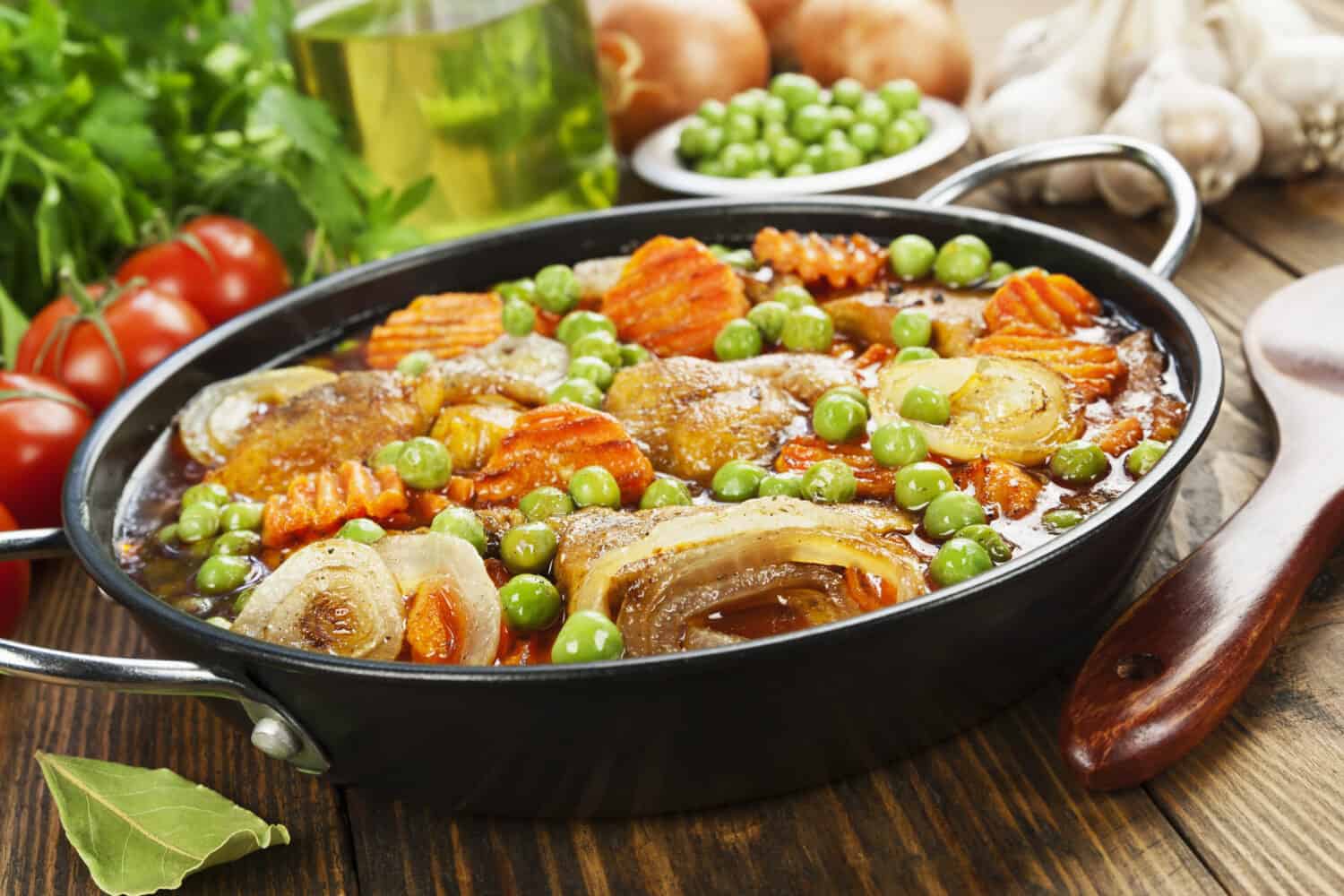
©Chatham172/Shutterstock.com
People worldwide have been eating stew for centuries because it is flavorful and filling. You can make stew by slowly cooking meat, vegetables, and sometimes grains or beans in a liquid over low heat. The liquid might be water, broth, wine, or a mix. It makes the meat more tender and adds flavor to the dish. You can make soup with many different kinds of food, and each culture has a unique way of making this popular meal.
The origins of stew can get traced back to ancient times when people cooked tough portions of meat with vegetables and grains to make them more flavorful. “Stew” comes from the Old French term estuier, which means “to cook in a pot.” Peasants used to cook stews by putting their ingredients on hand into a pot and cooking them over an open flame.
Over time, stews became fancier, and they got served at banquets and feasts. During the Middle Ages, stews were considered a luxury cuisine and cooked with exotic spices and expensive cuts of meat. However, people worldwide still like stews, which are popular comfort food for many.
Making Stew Healthier: Simple Substitutions
Use Lean Proteins
Instead of fatty portions of meat, try turkey, skinless chicken, or plant-based protein sources. Incorporating these into your dish will deliver essential vitamins and minerals without the excess saturated fat, which could reduce your risk of heart disease.
Use Whole Grains
Use whole grains like quinoa or brown rice instead of refined grains like white rice or pasta. Whole grains have more fiber, vitamins, and minerals that help digestion and overall health.
Use More Vegetables
Add vegetables like kale, zucchini, carrots, or bell peppers to your food to support a strong immune system and overall wellness. Increasing the number of vegetables in your diet improves the amount of critical vitamins, nutrients, and antioxidants your body needs.
Use Reduced-Fat Dairy
If your recipe requires cheese or cream, use a reduced-fat or low-fat version of cream and cheese. This substitution can help cut down on calories and saturated fat without sacrificing the flavor or texture of your stew.
- The must-have convenient reference guide for every home cook!
- Includes more than 8,000 substitutions for ingredients, cookware, and techniques.
- Save time and money on by avoiding trips to grab that "missing" ingredient you don't really need.
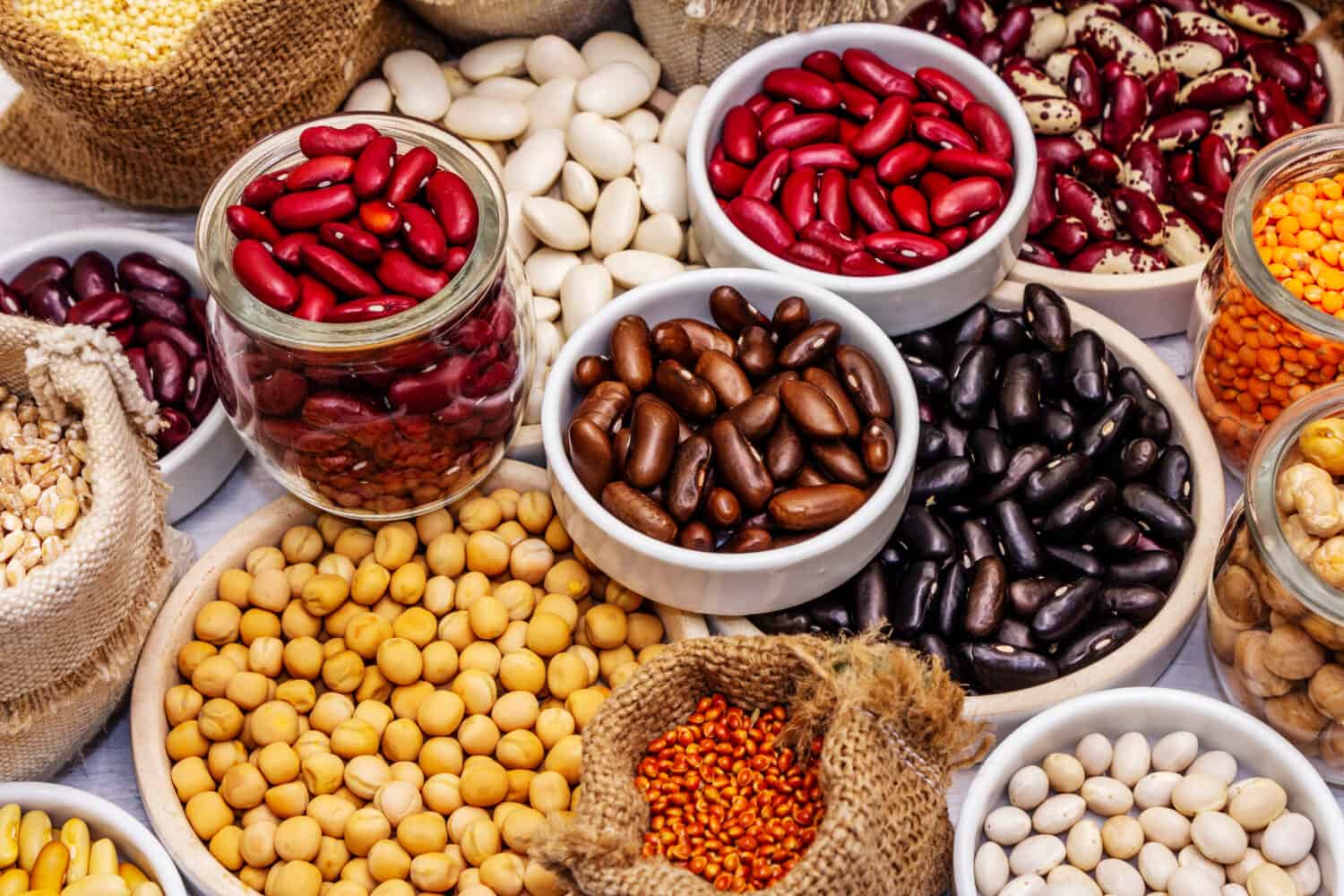
©Chatham172/Shutterstock.com
5 Stew-Making Techniques
How you make a stew differs slightly from a soup since stews tend to be thicker and have bigger, more substantial chunks of food. Here are a few of the most common ways to make stews:
- Slow Simmering: Like soups, stews usually take a long time to cook at a low temperature. This slow simmering lets the flavors blend and makes the tougher portions of meat softer.
- Braising: This is a common way to make stew. First, the meat gets browned over high heat and then is cooked gently in a tiny amount of liquid. This makes the meat softer and lets it soak up the taste of the broth and other ingredients.
- One-Pot Cooking: Stews are usually made in one pot or a Dutch oven, which lets the heat spread evenly and the flavors blend. This strategy also makes cooking easier and makes cleaning up easier.
- Slow cooking: A popular way to make stews is with a slow cooker or crockpot. The moderate, even heat lets flavors develop, and the meat gets tender without the risk of drying out or overcooking.
- Pressure Cooking: A pressure cooker can dramatically cut cooking time while maintaining stews' slow-cooked taste and softness. This method is beneficial when cooking harder portions of meat or foods that usually take a long time to cook.
These stew-making methods allow you to make a wide variety of hearty, flavorful stews that highlight various dishes and cuisines.
Similarities Between Soup and Stew?
Even though soup and stew are different in many aspects, they are also alike in several ways. Both dishes are produced using solid and liquid ingredients, like meats, vegetables, and sometimes grains. This mix of ingredients makes them versatile and easy to change, so you can use them in soups and stews with many different tastes and textures.
Soup and stew are both comfort foods in many parts of the world, which is another thing they have in common. Both recipes have been used for a long time to make people feel warm and cozy. They also get made with inexpensive ingredients.
Slow cooking is typically for making soup and stew because it lets the flavors blend and the ingredients soften. This slow-cooking method offers soups and stews a rich, refined flavor. By allowing the ingredients to boil gently, the dishes get an intense taste that makes them satisfying and delicious.
Soup Recipes
Stew Recipes
Print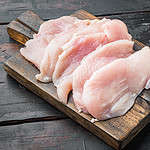
Chicken Biscuit Stew
- Yield: 4 servings 1x
Ingredients
1 cup julienned carrots
1 cup thinly sliced onion
2 garlic cloves, minced
2 teaspoons olive oil
1 pound boneless skinless chicken breast, cut into 1 inch cubes
1 Tablespoon all-purpose flour
¼ cup water
3 Tablespoons white wine or chicken broth
1 cup (8 ounces) fat free plain yogurt
1 cup fresh or frozen peas
¼ teaspoon each curry powder, salt, pepper, ground cumin, and ginger
BISCUITS:
1 cup all-purpose flour
1 teaspoon baking powder
¼ teaspoon baking soda
¼ teaspoon salt
4½ teaspoons cold butter
½ cup fat free plain yogurt
1½ teaspoons dried parsley flakes
Instructions
1. In a large nonstick skillet, sauté the carrots, onion, and garlic in oil until tender.
2. Add chicken; cook and stir for 5 minutes.
3. Combine the flour, water, and wine or broth until smooth; add to the skillet. Bring to a boil; cook and stir for 2 minutes or until thickened. Reduce heat; stir in yogurt, peas, and seasonings. Transfer to a shallow 1 1/2 qt. baking dish coated with cooking spray; keep warm.
4. For biscuits, combine flour, baking powder, baking soda, and salt in a bowl. Cut in butter until crumbly. Stir in yogurt and parsley. Drop eight mounds over warm chicken mixture.
5. Bake, uncovered, at 350° for 25 35 minutes or until biscuits are golden brown and stew bubbles around the edges.
Nutrition
- Serving Size: 1 cup stew with 2 biscuits
- Calories: 413
- Sodium: 895mg
- Fat: 9g
- Saturated Fat: 1g
- Carbohydrates: 47g
- Fiber: 5g
- Protein: 37g
- Cholesterol: 68mg
Final Thoughts
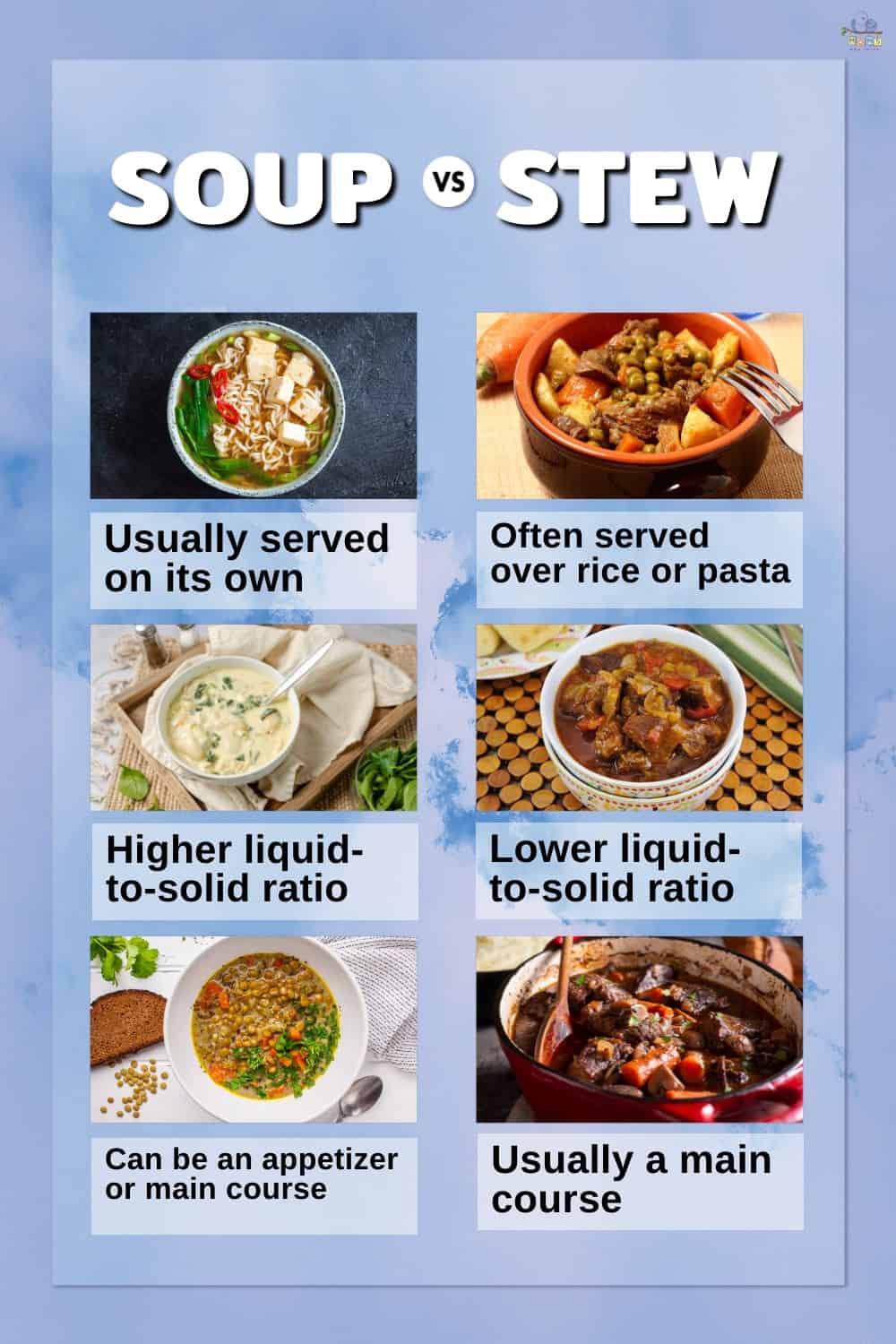
- Soup is enjoyed as both an appetizer and as an entrée, with the portion size varying accordingly. Meanwhile, stew is almost always the main course, although rarely it might be served as a side dish.
- Soup has a much higher liquid-to-solid ratio than stew, making it more of a broth. Some people prefer this, while others love the focus on meat and vegetables in stew.
- Stew can be eaten on its own, but it can also be poured over rice, pasta, or sometimes even bread for extra heartiness. Soup, on the other hand, is rarely poured over anything.
Soup and stew are warm and comforting, although they differ in certain ways. Soup is a thin, broth-based meal with more liquid than solid elements. On the other hand, Stew is a heartier, thicker dinner with more meat, vegetables, and grains. Both have been around for hundreds of years and have changed to incorporate diverse tastes, textures, and styles to fit different diets and tastes.
Simple changes like low-sodium broth, lean proteins, whole grains, vegetables, and reduced-fat dairy can make soup and stew healthy. You can make these recipes by slow cooking, braising, cooking in one pot, cooking under pressure, or pureeing. Even though they are different, soup and stew are comforting and serve many uses.
- The must-have convenient reference guide for every home cook!
- Includes more than 8,000 substitutions for ingredients, cookware, and techniques.
- Save time and money on by avoiding trips to grab that "missing" ingredient you don't really need.
